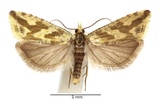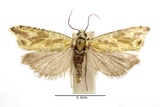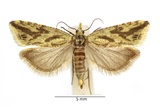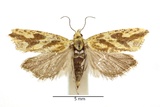Thiodia citrana (Hübner, 1799) Species
Last modified: June 18, 2025, 11 a.m.
A very rare and local and declining species in Belgium.
Details
- Classification
- Family: Tortricidae > Subfamily: Olethreutinae > Tribus: Eucosmini > Genus: Thiodia > Species: Thiodia citrana
- Vernacular names
- Citroenbladroller (NL), Lemon Bell, Canary Tortrix (EN), Zitronenwickler (DE)
- First mention in Belgium
- De Crombrugghe G. 1896b. Assemblée mensuelle du 3 octobre 1896. — Annales de la Société Entomologique de Belgique 40: 427. On page 427.
- Status
-
Native
Distribution
Imago
Wingspan 16–21 mm. Distinctive lemon-yellow general coloration of the forewing and strong apical streak. Light yellow forewings with brown patterning consisting of a cross band from the rear corner towards the middle of the leading edge which is connected with an oblong spot from the front corner and often broken cross band further into the wing. Also minute black streaks along the edge of the costa, when fresh.
Caterpillar
Dirty yellowish body with darker warts, head dark brown black, black prothoracic plate and light brown sternum.
Bionomics
The larvae live in a web on the inflorescence, spinning the flowerheads together. The larvae also bore in the flower stem. Wintering and pupation in a cocoon between the litter and may re-commence feeding again in spring before pupation.
Flight periods
The adults have been observed from late May towards late August in one generation a year.
Observed on
- Host plant (species):
- Achillea millefolium, Artemisia campestris, Anthemis cotula, Tanacetum vulgare and Anthemis tinctoria
The larva lives on Achillea millefolium, Anthemis tinctoria, Anthemis cotula, Tanacetum vulgare and Artemisia campestris.
Habitat
It inhabits rough grassland, waste ground and dry pastures often near the coast or great rivers.





